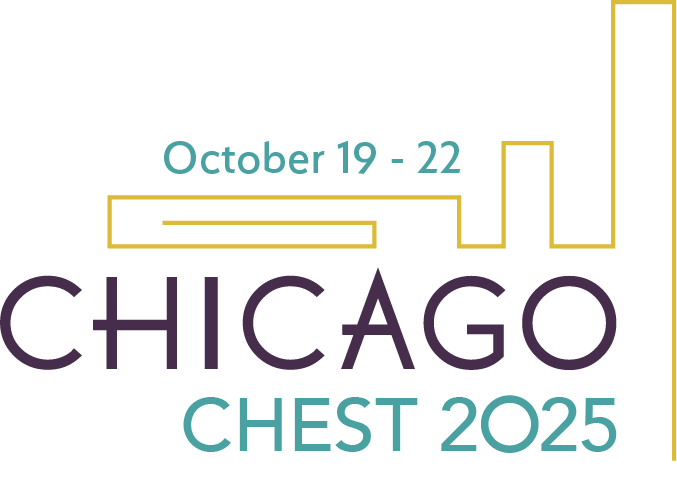
Bronchiectasis, a chronic and heterogenous lung condition marked by the abnormal widening and inflammation of the lower airways, has long been a challenging disease to manage. Its most common symptoms—persistent cough, frequent respiratory infections, and dyspnea—can severely impact a patient’s quality of life, contribute to a high burden of care, and result in high health care utilization. Despite the growing body of knowledge around the disease, treatment options have traditionally focused on one-size-fits-all management strategies rather than targeted interventions. However, recent advancements in therapeutics offer a glimmer of hope for the millions of people affected by this often-debilitating condition.
A changing paradigm
Traditionally, bronchiectasis management has involved airway clearance techniques, antibiotics to control periodic infections, and various forms of chest physiotherapy to address the underlying mucostasis that underpins the vicious vortex.1 While these strategies continue to be important treatment modalities, they do not address the underlying pathophysiologic pathways that ultimately lead to the airway injury and remodeling that characterize bronchiectasis. From a patient perspective, limited treatment options that have remained relatively unchanged for decades have offered little hope for meaningful improvement in long-term outcomes.
However, the past couple of years have seen significant strides in both pharmacologic and nonpharmacologic approaches, offering hope for better management and even potential improvements in lung function.
Targeted therapies
One of the most promising advancements in bronchiectasis treatment is the development of targeted therapies aimed at addressing key inflammatory pathways that perpetuate the disease. While disease phenotypes have long been recognized in other airway conditions, such as asthma and COPD, these are only now being described in bronchiectasis and are an important aspect of defining the treatable traits that enable precision treatment regimens.2
The first class of nonsteroid drugs to broadly target the neutrophilic endobronchial inflammation of bronchiectasis were the macrolides. Long-term use of low-dose macrolides, such as azithromycin, has shown to reduce the frequency of exacerbations in patients with bronchiectasis, and these are generally well-tolerated.3 Studies have demonstrated that patients with bronchiectasis receiving treatment with macrolides experience fewer exacerbations, less severe symptoms, and an improved quality of life. However, the use of macrolides in this patient population has led to concern for the emergence of macrolide-resistant nontuberculous mycobacterial (NTM) infections, a condition for which this patient population is at risk.
Another treatment on the horizon are the drugs that target neutrophilic inflammation—specifically, the neutrophil serine proteases that characterize endobronchial inflammation in the majority of patients with bronchiectasis. Recently, the results of a phase 3 trial evaluating brensocatib, a novel dipeptidyl peptidase 1 (DPP1) inhibitor, were published, showing a significant reduction in bronchiectasis exacerbations and improvement in FEV1.4
Another DPP1/cathepsin C inhibitor, BI1291583, showed favorable phase 2 results and has now entered a phase 3 clinical trial (NCT06872892).5 Another targeted anti-inflammatory agent, ensifentrine, a dual inhibitor of phosphodiesterase (PDE) 3/PDE4 that is already approved by the US Food and Drug Administration for the treatment of COPD, is under investigation for patients with bronchiectasis (NCT06559150).
In addition, monoclonal antibodies designed to target specific proteins involved in the inflammatory pathways are showing great promise in clinical trials. For example, therapies targeting IL-4, IL-5, and IL-13—key cytokines in type 2 inflammation—are now being explored in those 20% of patients with bronchiectasis with this endotype.6 Itepekimab, an anti-IL-33, is also under investigation in this patient population (NCT06280391).
Lastly, cystic fibrosis transmembrane conductance regulator (CFTR) dysfunction, both innate and acquired, is being more closely evaluated in those with bronchiectasis. Recent case series and a pilot trial are illustrating and evaluating the utility of highly effective CFTR modulator therapy in patients with bronchiectasis who carry a single mutation.7
Taken as a whole, these clinical trials represent a paradigm shift in disease management and demonstrate the significant momentum toward addressing the treatable traits of this heterogeneous disease.
Pulmonary rehabilitation and personalized care
While pharmaceutical innovations take center stage in the treatment of bronchiectasis, nonpharmacological interventions remain just as vital. Airway clearance remains a cornerstone in the treatment of bronchiectasis and should be considered in all patients with this condition. Pulmonary rehabilitation has proven to be an effective tool for improving time to exacerbation and enhancing patients’ overall well-being. The emphasis on exercise, in particular, can help patients build strength and endurance, counteracting the deconditioning that often accompanies this chronic illness.
In line with personalized care, the multidisciplinary approach to bronchiectasis is gaining recognition. This approach involves pulmonologists, respiratory therapists, physiotherapists, and nutritionists collaborating to create a holistic treatment plan for each patient. This comprehensive strategy is designed to address not only the medical aspects of bronchiectasis but also the psychological and social factors that contribute to the burden of disease. Recently, the Bronchiectasis & NTM Association launched the Care Center Network, recognizing centers of excellence for bronchiectasis and NTM care across the United States.
A glimmer of hope
With these new treatments and approaches, the therapeutic outlook for those who suffer from bronchiectasis is brighter than ever. The combination of personalized therapies, novel and repurposed medications, and a multidisciplinary approach is transforming bronchiectasis from a condition that once had few treatment options into one that offers hope for improved management and even disease stabilization.
As research continues to advance and more treatments emerge, there is cautious optimism that, one day, we may be able to offer a cure—or at least a significant reduction in disease severity—allowing people with bronchiectasis to lead fuller, healthier lives. For the time being, these new treatments represent a leap forward in an ongoing journey toward better care and outcomes for those affected by this challenging and often misunderstood disease.
This article was originally published in the Summer 2025 issue of CHEST Physician.
References
1. Flume PA, Chalmers JD, Olivier KN. Advances in bronchiectasis: endotyping, genetics, microbiome, and disease heterogeneity. Lancet. 2018;392(10150):880-890. doi: 10.1016/S0140-6736(18)31767-7
2. Chotirmall SH, Chalmers JD. The precision medicine era of bronchiectasis. Am J Respir Crit Care Med. 2024;210(1):24-34. PMID: 38949497; PMCID: PMC11197062. doi: 10.1164/rccm.202403-0473PP
3. Kelly C, Chalmers JD, Crossingham I, et al. Macrolide antibiotics for bronchiectasis. Cochrane Database Syst Rev. 2018;3(3):.CD012406. doi: 10.1002/14651858.CD012406.pub2
4. Chalmers JD, Burgel PR, Daley CL, et al. Brensocatib in non-cystic fibrosis bronchiectasis: ASPEN protocol and baseline characteristics. ERJ Open Res. 2024;10(4):00151-2024. PMID: 39040578; PMCID: PMC11261371. doi: 10.1183/23120541.00151-2024
5. Chalmers JD, Shteinberg M, Mall MA, et al. Cathepsin C (dipeptidyl peptidase 1) inhibition in adults with bronchiectasis: AIRLEAF, a phase II randomised, double-blind, placebo-controlled, dose-finding study. Eur Respir J. 2025;65(1):2401551. doi: 10.1183/13993003.01551-2024
6. Oriano M, Gramegna A, Amati F, et al. T2-high endotype and response to biological treatments in patients with bronchiectasis. Biomedicines. 2021;9(7):772. PMID: 34356836; PMCID: PMC8301446. doi: 10.3390/biomedicines9070772
7. Swenson CE, Hunt WR, Manfredi C, et al. Evaluating elexacaftor/tezacaftor/ivacaftor (ETI; Trikafta™) for treatment of patients with non-cystic fibrosis bronchiectasis (NCFBE): a clinical study protocol. PLoS One. 2025;20(2):e0316721. PMID: 39951444; PMCID: PMC11828409. doi: 10.1371/journal.pone.0316721
